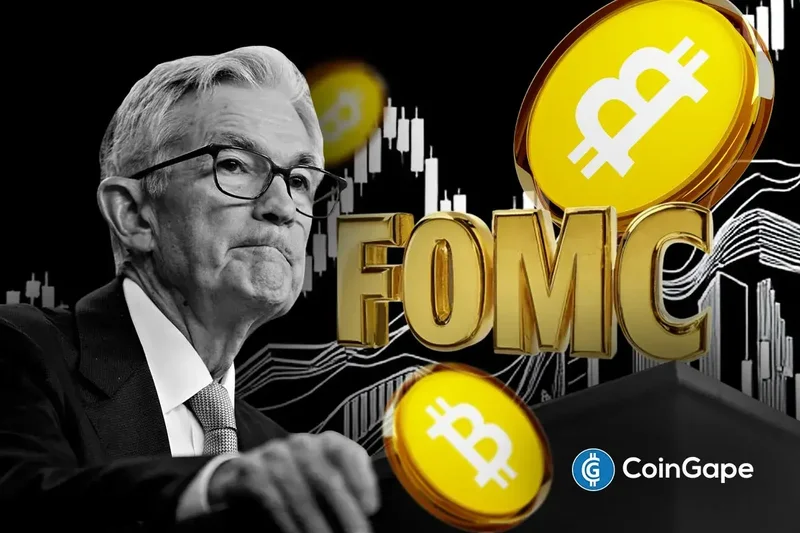Article Directory
The crypto market is holding its breath. In trading rooms and on Discord servers, you can almost hear the collective intake of air as thousands of eyes fixate on flickering charts. All this tension is for one man: Fed Chair Jerome Powell, who is set to speak at 8:30 a.m. EST. The stage has been set by the just-released FOMC minutes, which read like a green light for risk assets. A 25-basis-point cut is already on the books, and the language points toward more easing.
The consensus narrative is already priced in. Bitcoin is hovering near $122,400, and the total crypto market cap is a robust $2.44 trillion. The logic is simple, almost Pavlovian: when the cost of money goes down, capital seeks higher returns in riskier assets. The Fed is opening the liquidity spigot, and crypto is positioned with a bucket.
But this tidy cause-and-effect story feels too clean. The market is celebrating the symptom—the Fed’s dovish pivot—without properly diagnosing the disease that’s causing it. And when you look at the underlying economic data, the picture becomes significantly less clear.
The Consensus Is a Crowded Trade
Let’s be precise about what the Fed is saying. The minutes show a committee that has seen enough weakness to act. Economic growth in the first half of 2025 has slowed, domestic spending is softer, and wage growth is cooling. The unemployment rate has ticked up to about 4.5%—to be more exact, 4.3%. In this context, taking their foot off the monetary brake is a logical, almost defensive, move.
The market’s reaction is to treat this as a purely bullish signal. Lower rates make holding cash less attractive and borrowing cheaper, theoretically pushing investors up the risk curve into equities and, by extension, crypto. It’s a powerful narrative, and for the short-term, it’s likely to drive price action. We’re seeing it already in the altcoin market, where assets are catching a bid in Bitcoin’s wake.
This is the central bank acting as a market catalyst, a role it has played for over a decade. It’s like a tide that lifts all boats. The Fed provides the liquidity, and assets inflate. But a tide can also go out, and it’s the structural integrity of the boat that determines if it stays afloat or cracks on the rocks. Right now, everyone is just watching the water level rise, assuming it will continue indefinitely.

The problem? The Fed isn't just looking at unemployment and growth. It’s also staring down an inflation problem that hasn’t gone away. And this is the part of the report that I find genuinely puzzling.
An Unreconciled Contradiction
While the labor market is softening, inflation remains stubbornly elevated. Total PCE is holding at 2.7%, with the Fed's preferred "core" metric running hotter at 2.9%. Both figures are well above the central bank's 2% target. This isn’t a small rounding error; it’s a significant policy constraint, compounded by persistent supply chain pressures and tariffs.
So, the Federal Reserve is now in the unenviable position of trying to stimulate a slowing economy while simultaneously taming inflation. These two goals are fundamentally in opposition. Easing monetary policy to boost employment and growth risks reigniting price pressures. Tightening to control inflation risks pushing a fragile economy into a full-blown recession.
This is the core contradiction the market seems content to ignore. Traders are betting that the Fed will prioritize growth over inflation, continuing to cut rates even if PCE remains sticky. Is that a reasonable bet? Perhaps for the next quarter. But what happens if inflation re-accelerates? What if the data forces Powell to pause, or even reverse course, later in the year?
The crypto market, which has become so intensely correlated with macroeconomic liquidity conditions, is not priced for that possibility. It’s priced for a one-way trip to lower rates. I've looked at hundreds of these policy statements, and the current language (balancing risks while considering technological effects) is a masterclass in strategic ambiguity. It gives the Fed maximum flexibility, which means it also gives the market maximum uncertainty, whether it chooses to see it or not. The current rally is built on a foundation of hope—the hope that the inflation data will conveniently roll over and validate the Fed’s dovish stance. But hope is not a viable long-term investment strategy.
The Signal and the Noise
The market is reacting to the signal: rate cuts are here. It's a clear, powerful, and easily digestible narrative that fits neatly into a bullish thesis for assets like Bitcoin. But it’s ignoring the noise: the messy, contradictory economic data that underpins this policy shift. The Fed isn't cutting rates from a position of strength; it's cutting them because the dashboard is flashing yellow on growth and employment. The real story isn't the free money. It's the economic weakness that's forcing the Fed's hand. For now, the signal is winning. But noise has a habit of getting louder until you can no longer ignore it.
